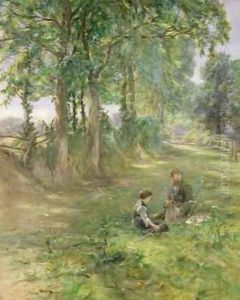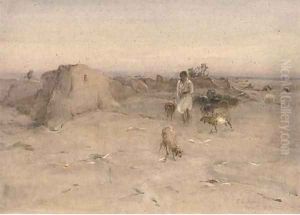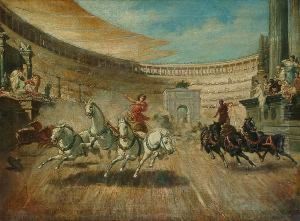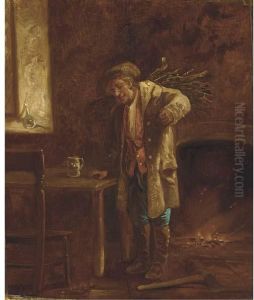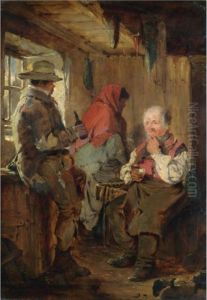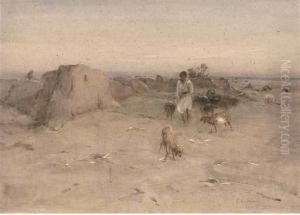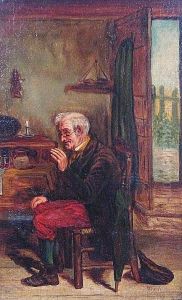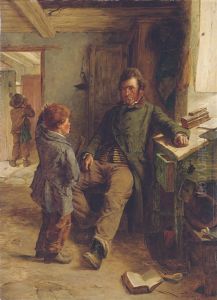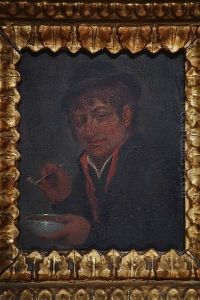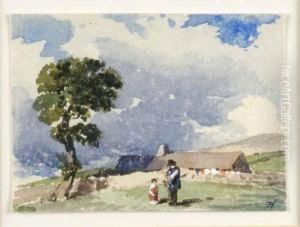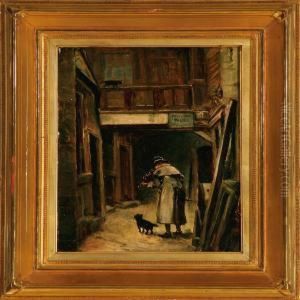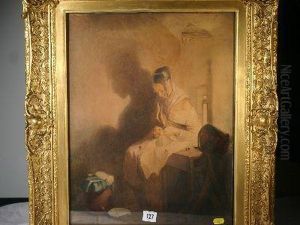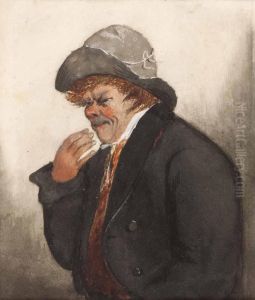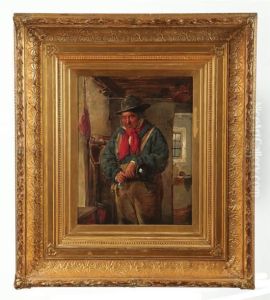Erskine E. Nicol Paintings
Erskine E. Nicol was a Scottish painter known for his genre scenes, often depicting aspects of Scottish and Irish life with both humor and pathos. Born on July 3, 1825, in Leith, Edinburgh, Scotland, Nicol initially pursued a career in teaching before deciding to focus on painting. He trained at the Trustees’ Academy in Edinburgh, where he was influenced by the work of Sir David Wilkie, a fellow Scottish artist known for his genre scenes.
In the early stages of his career, Nicol became known for his detailed and vibrant portrayals of Scottish rural life, which often included elements of satire and social commentary. His ability to capture the character and mood of his subjects earned him significant recognition. In 1846, Nicol moved to Dublin, Ireland, where he spent seven years. The move proved to be a pivotal period in his career, as he developed a keen interest in depicting Irish life, a theme that would dominate much of his work. His paintings from this period are characterized by their empathetic portrayal of the hardships and joys of the Irish peasantry, rendered with a keen eye for detail and a genuine affection for his subjects.
Nicol's work was widely exhibited, with showings at prestigious institutions such as the Royal Academy in London, the Royal Scottish Academy, and the Royal Hibernian Academy. His paintings were well received, and he gained a reputation for his engaging and often humorous depictions of everyday life. In 1862, Nicol was elected an Associate of the Royal Scottish Academy, and later, in 1866, he became a full Academician, a testament to his contributions to the art world.
Throughout his career, Nicol divided his time between Scotland and England, drawing inspiration from the locales and people he encountered. Despite the popularity of his Irish scenes, Nicol also produced a significant body of work depicting Scottish life, as well as scenes from his travels in England. His attention to detail, combined with his ability to convey the nuances of human emotion and social interaction, made his work popular among both critics and the public.
Erskine E. Nicol passed away on March 8, 1904, in Feltham, London, England. Today, he is remembered as a master of genre painting, with his works held in high esteem and featured in collections across the United Kingdom and beyond. His legacy as an artist who could portray the vibrancy and complexity of rural life in the 19th century continues to be celebrated.
